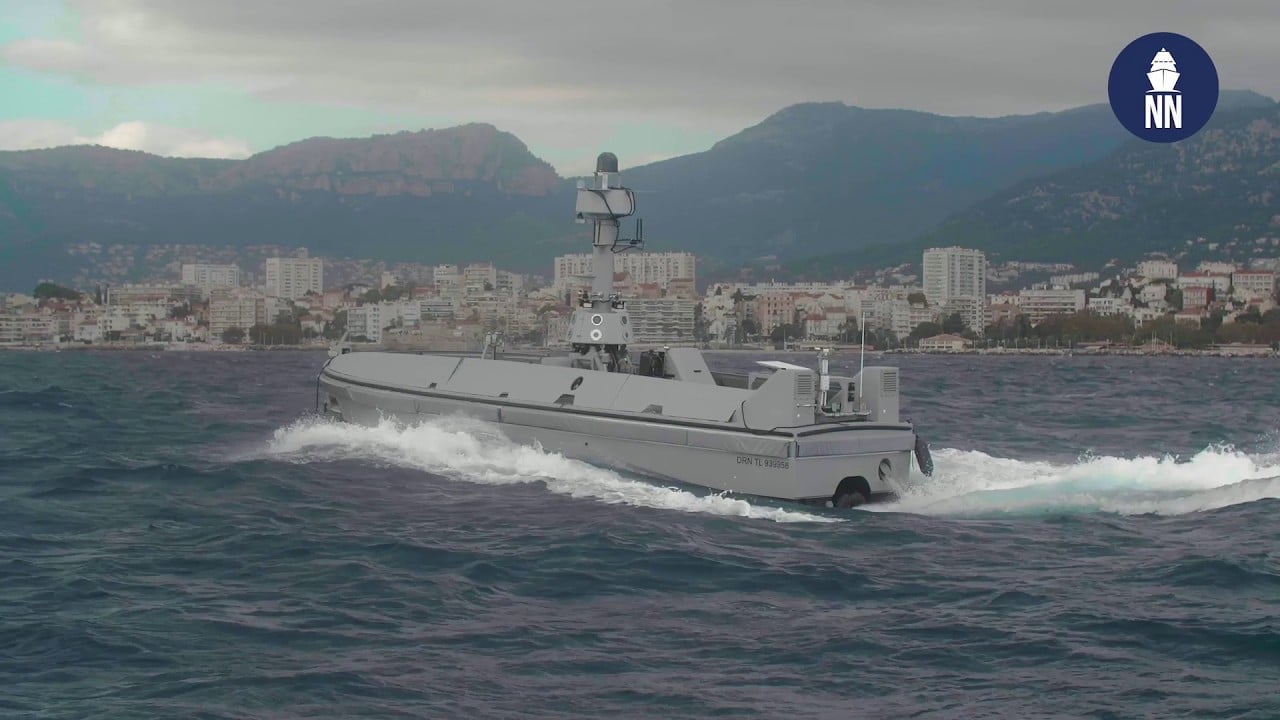Euronaval 2024: Naval Group Unveils Seaquest USV

The Seaquest S is a new type of surface drone launched by Naval Group, a well-known company specializing in advanced naval technology. This drone, known as a USV (Unmanned Surface Vehicle), was created by Naval Group’s subsidiary, Sirehna, and made in partnership with the Couach-CNC shipyard. The first Seaquest S was launched in July 2024 and represents an exciting step forward in drone technology. This drone can be used by both government and civilian groups, and it’s made to be flexible and meet various needs, including carrying out missions for defense purposes.
Naval Group designed the Seaquest S with a “modular” approach. This means the drone can be adapted to fit specific missions. For example, governments might use the Seaquest S for security purposes, while civilian groups could use it for tasks like exploring coastal waters or environmental monitoring. The idea behind the design is to make one drone that can perform many tasks by adjusting its parts and technology to suit the job.
Naval Group has a wide variety of drones and autonomous systems. Their range is divided into four major product lines. Each line is created with a step-by-step (or incremental) approach, meaning that the simpler models can be easily upgraded to become more powerful and capable over time. This flexibility is essential as it allows each model to gain new abilities as needed. Here’s a closer look at each of these product lines:
- Seagent Range: This includes underwater drones, or UUVs, that can operate in various sizes, such as M (medium) and XL (extra-large). These are built for exploring and gathering data below the water’s surface.
- Seaquest Range: This range includes surface drones, known as USVs, and autonomous systems. These drones come in S (small), M (medium), and L (large) formats, giving a range of sizes to meet different mission needs. The Seaquest S, for example, is the first drone in this series.
- Steeris Range: This includes technology that controls drones during missions. The Steeris On Board feature provides decision-making abilities to drones, while the Steeris Mission System allows multiple drones to work together across different environments like water or air. Additionally, Steeris Command is a version that can be packed into a container, allowing these drones to be deployed from either land or sea.
- Sealken Range: This range focuses on systems that help to integrate drones with naval ships. It enables drones to be deployed directly from naval ships, whether they are surface vessels or submarines, making them ready for defense-related missions.
French Navy ship hits surface drone menacing a tanker in the Red Sea
Naval Group’s Seaquest S and other drones in its product lines bring a new level of flexibility and advanced technology to naval operations. Their modular designs mean they can be adapted to meet many different needs, making them useful for a range of tasks in both government and civilian sectors. As these drones continue to develop, they hold promise for improving naval security, exploration, and research across the world.
